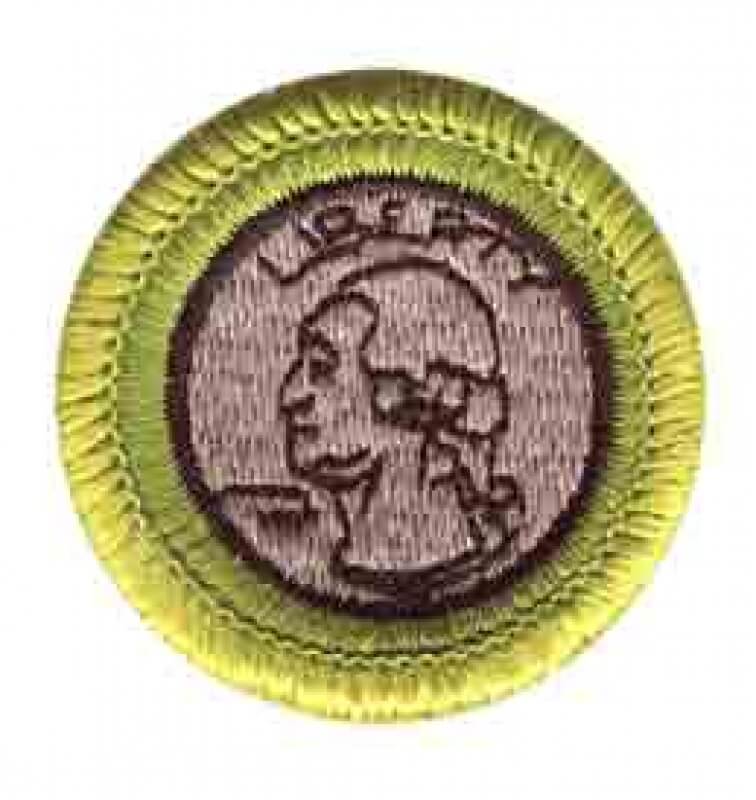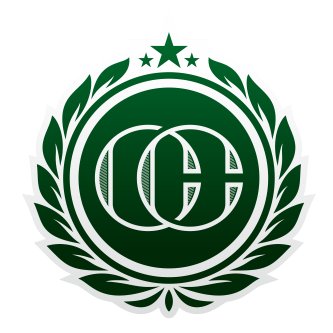The ultimate guide to the coin collecting merit badge
Everything You Need to Know

If you’re working on getting your Coin Collecting Merit Badge, but you’re wondering where to start, we’ve got the guide for you
We’ll go over everything you need to do to complete the Merit Badge
The first thing you need to know is where all the active U.S. Mint facilities are.
The four current active U.S. Mint facilities are located in
- Philadelphia, Pennsylvania
- San Francisco, California
- Denver, Colorado
- West Point, New York
How coins are made
The process of making coins has come a long way from having to do every step by hand!
Coins start out first with a solid piece of metal called an ingot. This is then placed into a machine that rolls it out flat like a giant rolling pin. The metal is rolled out into the thickness of the finished coin.
Nowadays most of the U.S. coinage is clad, meaning it has an inner core of copper and the two outer layers are made of copper-nickel. The cent has a zinc core with copper layers on the outside.
After the metal is all rolled out into long thin strips, which are called coils, the coil is fed into a machine called a blanking press, which cuts all the round disks--called blanks--out of the sheet, like a giant cookie cutter!
After the blanks have been punched out, the scrap metal that’s leftover gets recycled.
Now it’s time for some heat!
The blanks go into the annealing furnace, which heats up to 1,600 fahrenheit! They’re heated in an oxygen-free environment which prevents the metal from tarnishing. This heating process of annealing alters the physical properties of the metal which then makes it softer and helps the design stay in the coin without it breaking when it’s struck.
Right after the annealing process, the blanks get dunked into a liquid bath of a mixture of water, citric acid powder, and lubricants to quickly cool down the metal and prevent them from sticking together. The coins then get drained, washed in a cleaning solution and dried.
Next up is the upsetting mill. This process creates the raised rim around the coins’ edge. The blanks are fed into grooves that are a little bit narrower than the coins’ diameter, this causes the edges to get pushed up and form a raised rim.
The blanks have now become “planchets”. After this stage, they’re ready to become fully fledged coins!
The planchets get put into the coin presses, and the machine uses 35 to 100 metric tons of pressure to strike the design of the obverse and the reverse into the planchet at the same time.
The coins then make their way out of the U.S. Mint, into banks, and eventually your pocket!
Terms and Definitions
You’ll also need to know the term definitions of a few numismatic words, such as;
Obverse
The front, or face/heads side of a coin. This side usually has a portrait, or a person featured on it.
Reverse
The back, or tails side of a coin
Reeding
Reeding refers to the process of creating a reeded edge on a coin, a reeded edge is a series of grooved lines around the perimeter of a coin, such as the dime.
Clad
Clad refers to a coin that has a core and an outer layer that are each composed of different metals. The modern quarters and dimes are a couple examples of clad coins.
Type Set
Date Set
A collection of one type of coin from each year that coin was minted, for instance, a date set of Roosevelt dimes would be one dime from each year 1946 to the present year.
Grading terms
Grading describes the condition of a coin, professional grading is separated into 7 categories;
- Uncirculated
- Extremely Fine
- Very Fine
- Fine
- Very Good
- Good
- Poor
Poor
Date and mintmark must be identifiable, but the entire surface of the coin has been worn, possibly many defects as well.
Good
A coin with this grade is heavily worn, but most of the designs are distinctly outlined.
Very Good
Coins with a VG grade are well worn, but major designs are faintly visible.
Fine
A fine coin has moderate wear, but is easily identifiable and all details are clear.
Extremely Fine
An extremely fine coin has light overall wear, the details are sharp and there may even be a bit of the original mint luster still on the coin.
Uncirculated
An uncirculated coin is a coin that doesn’t show any signs of wear, or that it has been used in circulation.
There is another categorization for coins and that term is “proof”
Proof is not a grade of coin, proof is a type of coin that has a certain style of finish.
The U.S. Mint characterizes a proof coin as “a specially made coin distinguished by sharpness of detail, usually with a brilliant mirror-like surface.”
This is not a condition of a coin, nor a grade, but rather the way it is made.
Encapsulated Coins
After a coin is graded by a professional grading service such as PCGS or NGC, you have the option to have your coin encapsulated in what’s called a “slab”
This is a sealed, tamper-proof plastic container that helps to preserve the coin for many years. Generally once a coin is encapsulated or “slabbed” it does not get removed from the container as these containers are made to not be opened.
There are other ways to store your coins however, a slab isn’t always needed for coins, generally you want a coin encapsulated if it’s very high grade, but for lesser graded coins there are a few options.
Storing Your Coin Collection
One of the most important things about a coin collection is storing it properly! Improper storage of coins can lead to the coins becoming damaged or degrading. They can get scratched or dented and that will lower the condition and the value of the coin.
When looking for coin storage, if you go the plastic route you need to watch out for holders that are made with PVC. PVC will cause a green slime to form on your coins over time. Try to find PVC-free holders, or use a PVC-free bag before putting the coin into the holder.
There are more ways of storing your coins but we’re just going to go over three of your options here.
Cardboard Folders
You’ve probably seen those cardboard folders for coin sets, they’re most often used for the 50-state quarters type set. These are a great way to organize a collection of circulated coins or coins from pocket change. Since it doesn’t really protect the coins at all, and they can get scratched going into the holders, these aren’t the best idea for more valuable collector’s coins.
Flips
Flips are a 2x2 plastic holder with a pocket for a coin, and a pocket for a paper insert that holds more information about the coin. These two pockets fold together to make a 2x2 square. You can then store them in special flip boxes made for holding many flips.
Paper Envelope
Another option is 2x2 paper envelopes. These are probably the cheapest option you’ll find for storing your coins. The downside is that you do have to take the coins out of the envelope to view them. But they are good for storing large amounts of coins that you won’t be looking at or handling often.
The 50 State Quarters Program
The 50 State Quarters Program was launched in 1999 as a 10-year program honoring the 50 states in the order they were each admitted into the Union or ratified the Constitution. The mint released 5 designs each year. The reverse of the coins featured each state’s design, and the obverse featured a portrait of George Washington.
America The Beautiful Quarters Program
The America the Beautiful Quarters Program began in 2010. It features 56 different designs depicting U.S. National Parks and other national sites. The final quarter in the program, featuring the Tuskegee Airmen National Historic Site, was just released in February of 2021.
The Purpose of the Federal Reserve
The Federal Reserve is the Central Bank of the United States, it essentially functions as the “bank’s bank”, and supplies and ensures that institutions have enough currency to meet demand. Nowadays, most of the American money supply is actually digitally distributed and credited to major banks, but the Federal Reserve does still supply physical currency with the help of the Department of the Treasury.
The Federal Reserve was created on December 23, 1913 by an Act of Congress.
There are 12 Reserve banks located throughout the Country, they are located in the following cities: Philadelphia, Cleveland, Boston, Kansas City, Minneapolis, Richmond, St. Louis, Chicago, San Francisco, and Atlanta.
What is legal tender?
Legal tender notes, first introduced in 1862 are currency for “all debts public and private”
Who is Pictured on Current U.S. Paper Money?
You likely recognize George Washington and Abraham Lincoln on the $1 and the $5 notes, but who are the others? We’ll go over everyone currently pictured on U.S. paper money and talk briefly about what they each did that was cause for them being featured on our money.
$1.00 -- George Washington
George Washington was the first President of the United States, he served from 1789-1797.
$2.00 -- Thomas Jefferson
Thomas Jefferson was one of the Founding Fathers of the United States, and he actually wrote the very first draft of the Declaration of Independence. He went on to become the third President of the United States and served from 1801-1809.
$5.00 -- Abraham Lincoln
Abraham Lincoln was the sixteenth President of the United States and served from 1861 to 1865 when he was assassinated by John Wilkes Booth. During his Presidency, he brought about the emancipation of slaves, with the Emancipation Proclamation in 1863.
$10.00 -- Alexander Hamilton
Alexander Hamilton was the Secretary of the Treasury from 1789-1795
$20.00 -- Andrew Jackson
Andrew Jackson was the seventh President of the United States.
$50.00 -- Ulysses S. Grant
Ulysses S. Grant was the eighteenth President of the United States and served from 1869-1877. Grant was the youngest president ever elected at the time, and he established the first National Park, Yellowstone, in 1872.
$100.00 -- Benjamin Franklin
Benjamin Franklin was another one of the Founding Fathers and helped write the Declaration of Independence as well as the U.S. Constitution. He was a respected inventor, publisher, scientist, and diplomat. He negotiated the 1783 Treaty of Paris, ending the Revolutionary War.
And lastly, you’ll need to do ONE of the following:
- Collect and identify 50 foreign coins from at least 10 different countries.
- Collect and identify 20 bank notes from at least five different countries.
- Collect and identify 15 different tokens or medals.
- For each year since the year of your birth, collect a date set of a single type of coin.
As well as ONE of these following options:
- Tour a U.S. Mint facility, the Bureau of Engraving and Printing facility, a Federal Reserve bank, or a numismatic museum or exhibit, and describe what you learned to your counselor.
- With your parent's permission, attend a coin show or coin club meeting, or view the Web site of the U.S. Mint or a coin dealer, and report what you learned.
- Give a talk about coin collecting to a group such as your troop, a Cub Scout pack, or your class at school.
- Do drawings of five Colonial-era U.S. coins.
All Rights Reserved | CoinCollecting.com

